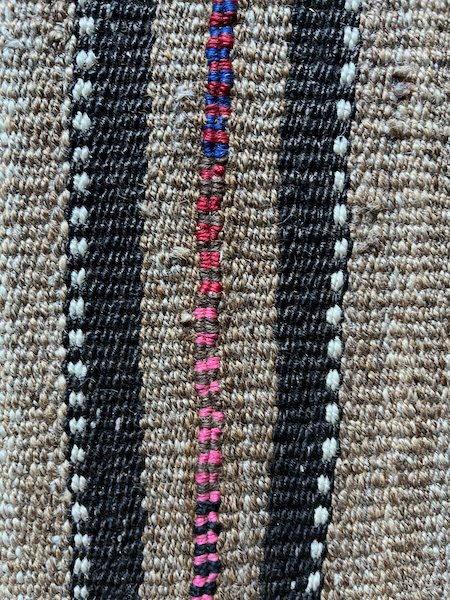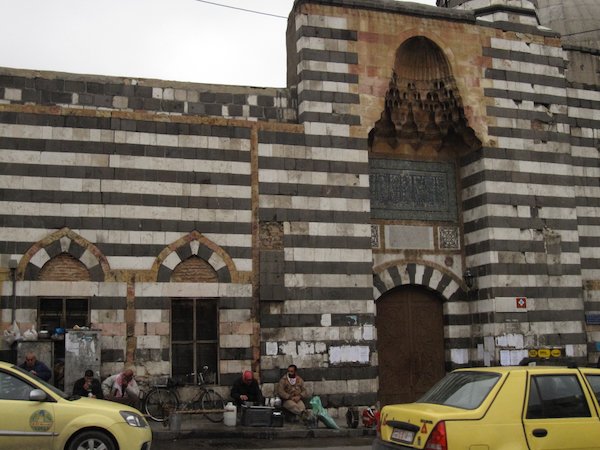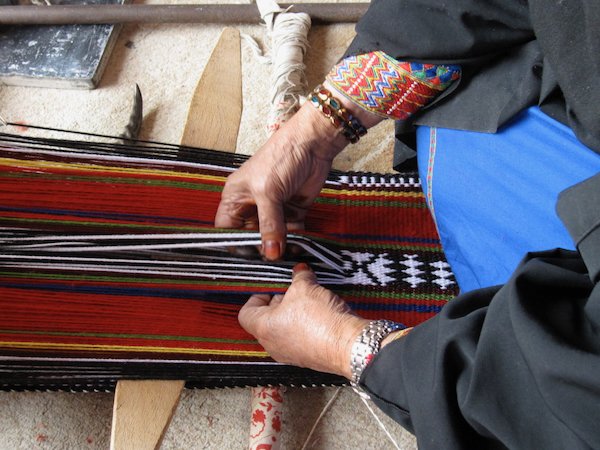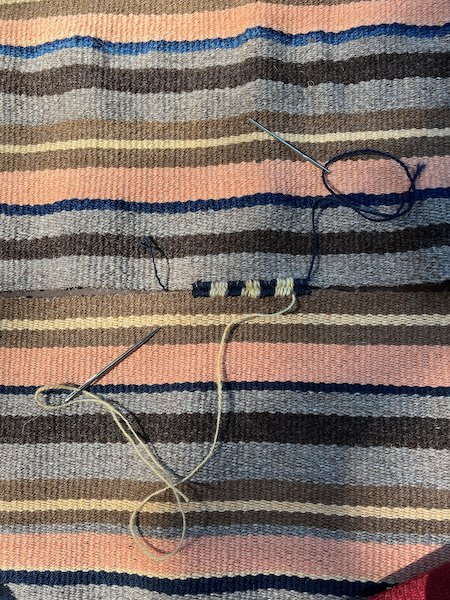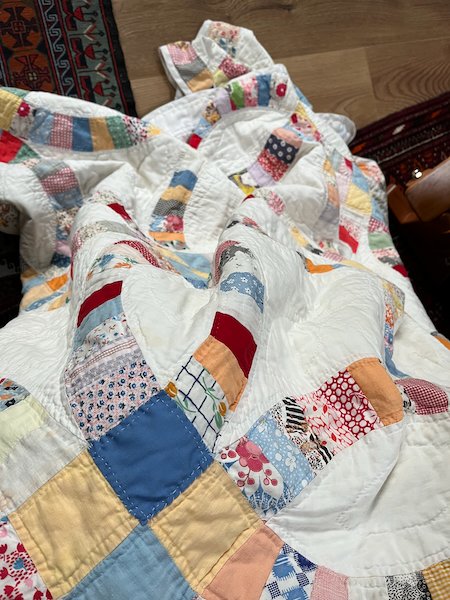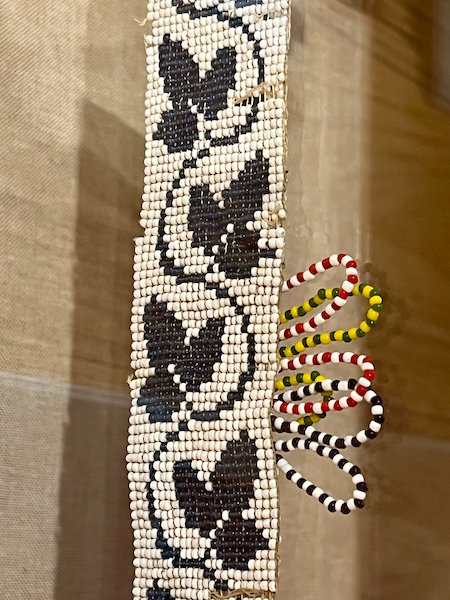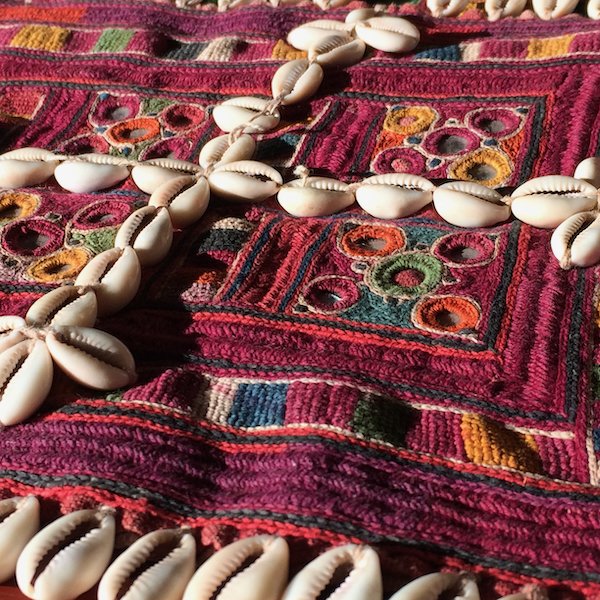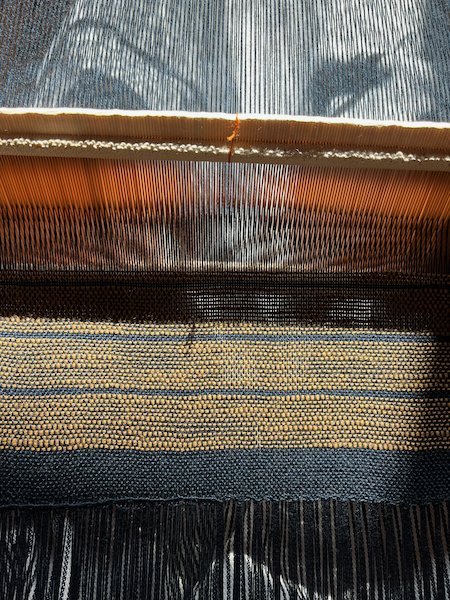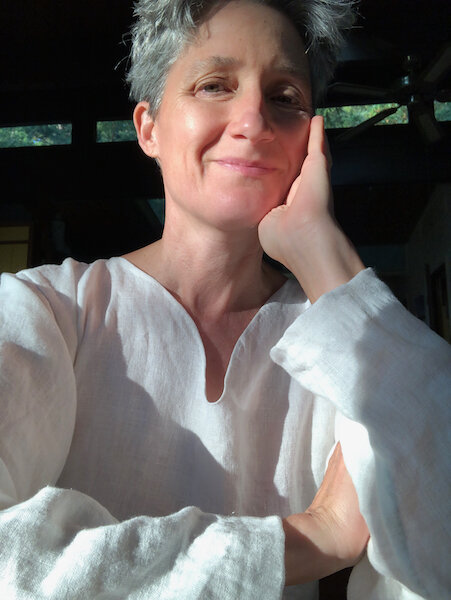Sewing a seam to join handspun, backstrap-woven wool striped fabrics.
As soon as I began to stitch a figure-8 seam with alternating colors, these bits of weaving seemed to become a legit textile. This decorative joining stitch made my weaving look a bit like the handwoven textiles I brought home from Damascus and Doha.
Joining stitch detail of a handwoven, handspun camel hair rug made in Raqqa, Syria, and purchased in Damascus in 2011.
Damascus in February, 2011, just because
Bedouin and other nomadic weavers using ground looms tend to weave narrow cloth in long strips that are cut to the right length and sewn together. I’ve always admired the alternating colors on the joining stitches, and knew it required extensive care and time to make these figure 8 stitches so close together. It wasn’t until I started sewing that I understood that alternating colors has a structural function. If you alternate colors, you’re adding strength and protection, because if yarn breaks in one place, it’s surrounded by the opposite color yarn and won’t simply unravel. Traditional methods almost always have a practical, structural reason behind them, in addition to beauty.
Joining stitch detail of an Iraqu Bedouin weaving, purchased in Doha in 2013
Bedouin weaver Noura Hamed Salem Shehayeb working on a small frame loom in Doha, Qatar, 2011. This weaver is interviewed in a film from Qatar Museums: https://qm.org.qa/en/stories/all-stories/women-of-the-desert-video/
Souq Waqif in Doha, Qatar, where I bought the Iraqi weaving and saw many others from Syria, Jordan, Iraq, and the Gulf, 2011
Even this tatreez on linen, a Palestinian fragment that a friend identified as possibly from Bethlehem, shows the dense alternating joining stitches. Makes me wonder if this is a case of a popular technique being used in excess of its structural need. I’m sure this join is stronger than strictly necessary, but it’s definitely beautiful. The artist experimented with another type of joining stitch in the area on the left.
Palestininan cross stitch panels with intricate joining stitches
Now I'm noticing joining stitches everywhere. This is a nice join on an embroidered bag from Gujarat, which I've been using to hold a writing project. It's more of a double blanket stitch, maybe similar to Van Dyke stitch…. I don't know how it's done.
Meanwhile, I carry on stitching my panels together. Looking at the joins on these various traditional pieces, maybe you can see why my own weaving feels more like the real thing when it’s sewn together with decorative joining stitches. And it feels good to make narrow strips into a wider cloth (although I still can’t say what it “is”, besides handwoven wool cloth.) There are times when ‘putting in stitches,’ as my quilting mentor Mrs Graham used to say, feels like the only way to hold it together. I mean that in the widest, most global sense.
How it looked when I first began. The two sewing yarns are both in action, and the yarn is threaded behind to begin the next section of stitching.
I could say deep things about ‘joining together’, but I think the metaphor is already obvious. I continue to not be able to get enough of Abdul-Wahab Kayyali’s oud playing, which moved me to poetry when I heard him live with Les Arrivants last month. Just learned about this powerful project combining music and poetry around themes of survival and devastation (Mafaza project, through Henna Platform). Wishing for more beauty, less bombing.
Another detail of this wonderful Palestinian embroidery, known as tatreez. Check out this website for more: https://www.tatreezandtea.com/
Nostalgic Doha photo of someone fishing, 2008

